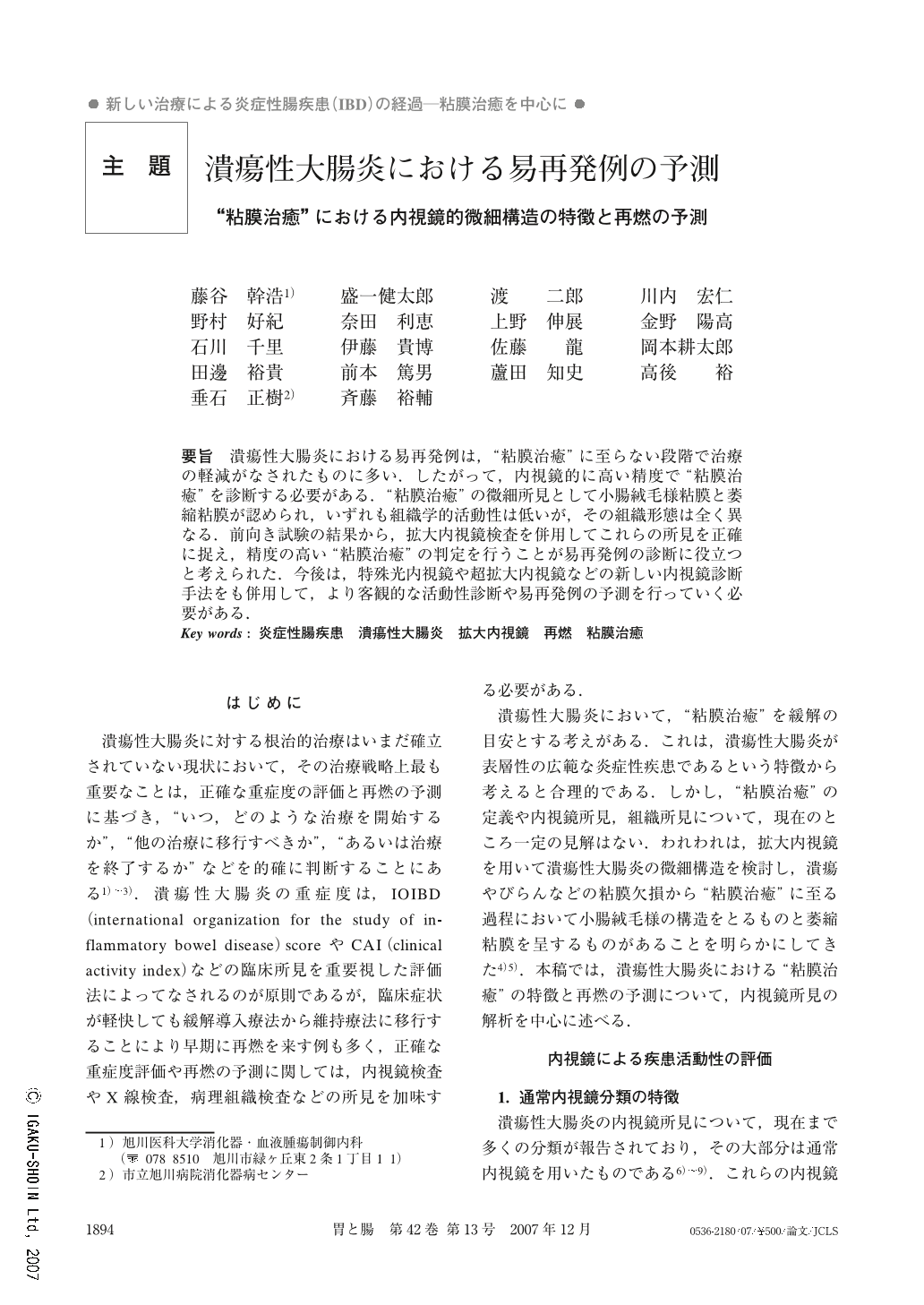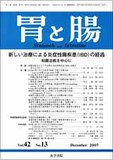Japanese
English
- 有料閲覧
- Abstract 文献概要
- 1ページ目 Look Inside
- 参考文献 Reference
要旨 潰瘍性大腸炎における易再発例は,“粘膜治癒”に至らない段階で治療の軽減がなされたものに多い.したがって,内視鏡的に高い精度で“粘膜治癒”を診断する必要がある.“粘膜治癒”の微細所見として小腸絨毛様粘膜と萎縮粘膜が認められ,いずれも組織学的活動性は低いが,その組織形態は全く異なる.前向き試験の結果から,拡大内視鏡検査を併用してこれらの所見を正確に捉え,精度の高い“粘膜治癒”の判定を行うことが易再発例の診断に役立つと考えられた.今後は,特殊光内視鏡や超拡大内視鏡などの新しい内視鏡診断手法をも併用して,より客観的な活動性診断や易再発例の予測を行っていく必要がある.
Most cases with short-term relapse occurred among patients who had stopped having remission-induction therapy before ‘Mucosal healing'. Confirming ‘Mucosal healing' is important for deciding when the remission-induction therapy should be withdrawn. Two types of colonoscopic features, ‘Villous-like' and ‘Atrophic mucosa', were shown to be indicative of quiescent mucosa. Either ‘Villous-like' or ‘Atrophic mucosa' is, histologically, indicates remission, but their morphological features are quite different. Our prospective study has shown that magnifying colonoscopy is needed to diagnose ‘Mucosal healing' and is useful for predicting cases with short-term relapse. In the near future, new endoscopic procedures such as NBI, AFI and ultra-magnification will be able to be established to determine the activity of ulcerative colitis and predict remission periods.

Copyright © 2007, Igaku-Shoin Ltd. All rights reserved.


